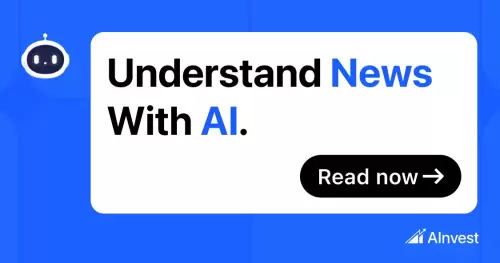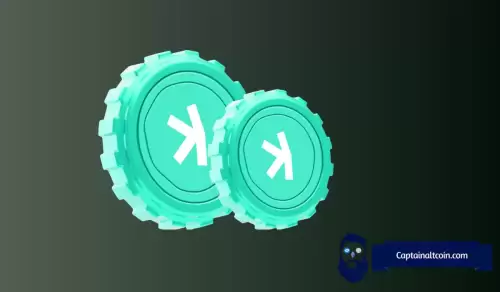 |
|
 |
|
 |
|
 |
|
 |
|
 |
|
 |
|
 |
|
 |
|
 |
|
 |
|
 |
|
 |
|
 |
|
 |
|
Articles d’actualité sur les crypto-monnaies
Most Coding Will Be Done by AI Systems in a Few Years, Google DeepMind Gives Context
May 05, 2025 at 11:08 am

Several tech leaders have been saying that we’ll see several jobs taken over by AI in the coming years, and among the jobs that are expected to be affected the most is coding. We’ve already seen promising demos of AI systems like AlphaCode and GPT-4 handling coding tasks, and it seems like this capability is advancing rapidly.
Now, Google DeepMind research scientist Nikolay Savinov has given some context on how that’ll actually happen. In a discussion on the DeepMind blog, Savinov predicts that we’ll soon see “superhuman coding systems” that will become indispensable tools for every coder, thanks to the advent of massive, readily available context windows.
The context window is the size of the input the model is able to ingest and process in one go. Currently, the best language models like GPT-4 and PaLM 2 have a context window of about 1 million tokens, which is enough for about 500 pages of text. This enables them to perform several tasks quite well, and as we move to even larger context windows, we’ll see an initial leap in quality and retrieval capabilities.
“I think it will take maybe a little bit more time, but it’s going to happen. As the cost decreases, the longer context also gets unlocked. So, I think reasonably soon we will see the 10 million context window. And this will be a standard offering from some AI provider. When this happens, that’s going to be a deal-breaker for some applications like coding,” said Savinov.
“Because I think for one or two million, you can only fit small and medium-sized codebases in the context. But 10 million actually unlocks large coding projects to be included in the context completely. And I think this is going to be crucial for achieving superhuman coding systems which will be totally unrivaled and become the new standard tool for every coder.”
This will also enable some truly interesting applications that we still aren’t thinking about yet. As Savinov puts it, when we reach near-perfect million-token context windows, it will “unlock totally incredible applications” that we can’t even imagine yet.
“But I think when we get to ten or hundred million tokens, we will be able to create truly general-purpose AI systems which will be able to perform any task that a human can do and even better,” added Savinov. “And I think this is really going to revolutionize our society and create new possibilities for humanity.”
Of course, this is still dependent on the researchers at DeepMind and other labs making progress on context windows, which Savinov says will require “more deep learning innovations.” We’re already seeing context windows increase rapidly, and as the cost of processing such large inputs comes down, we can expect to see even larger context windows in the coming years.
This is especially useful for use-cases like coding. If an application’s code can fit within the context window, the AI system can see all of the code at once, and can also see dependencies among different parts of the code. This allows it to make changes to the code while keeping in mind how different parts of the code work together.
A smaller context window, in contrast, means that the LLM can understand only a part of the code at once, and if it tries to fix it or change it, it could break other parts of the code which might be dependent on it. As such, when the AI system suggests changes in one part of the code, it can break other parts, and manually having to debug such code can often chip away at the advantages of using an AI system in the first place.
But if we get to 10 million context windows—the top AI systems today have context lengths of around 1 million—we’ll be able to fit entire codebases of complex software projects. This could revolutionize software development, enabling AI to generate code, debug, refactor, and even design entire systems with minimal human intervention. And it’s perhaps this upcoming increase in context window lengths that companies like Anthropic and Meta are thinking of when they say that most coding will be done by AI systems in the not-too-distant future.
Clause de non-responsabilité:info@kdj.com
Les informations fournies ne constituent pas des conseils commerciaux. kdj.com n’assume aucune responsabilité pour les investissements effectués sur la base des informations fournies dans cet article. Les crypto-monnaies sont très volatiles et il est fortement recommandé d’investir avec prudence après une recherche approfondie!
Si vous pensez que le contenu utilisé sur ce site Web porte atteinte à vos droits d’auteur, veuillez nous contacter immédiatement (info@kdj.com) et nous le supprimerons dans les plus brefs délais.
-

- Deriw MainNet: zéro les frais de gaz révolutionnent le trading des dérivés sur chaîne
- Aug 06, 2025 at 09:29 am
- DeRiw lance son principal temps de rédaction sur les dérivés sur chaîne pionnière et pionnier avec un débit élevé et une intégration d'écosystème robuste, établissant une nouvelle norme pour les échanges décentralisés.
-

- Iota, Cloud Mining et Crypto respectueuse de l'environnement: une prise d'investisseur de New York
- Aug 06, 2025 at 09:18 am
- Explorez l'intersection de l'Iota, de l'exploitation de nuages et des pratiques écologiques dans le monde de la cryptographie. Découvrez comment des plateformes comme Iota Miner façonnent l'avenir de l'investissement dans les actifs numériques.
-

-

- MEME COIN Mania: L'Arctic Pablo's Token Burn enflamme la frénésie de prévente
- Aug 06, 2025 at 08:15 am
- L'Arctic Pablo Coin réchauffe le marché de la pièce MEME avec sa prévente, ses brûlures de jetons et ses incitations communautaires uniques, faisant des comparaisons avec les premiers jours de Shiba Inu.
-

-

-

- Glitch de l'API hyperliquide: remboursements et conte d'avertissement
- Aug 06, 2025 at 08:00 am
- Les récents problèmes d'API d'Hyperliquide étincent le débat: le remboursement des utilisateurs a-t-il été «décence de base» ou «au-delà»? De plus, un examen plus approfondi de la récupération du battage médiatique et de la prudence persistante.
-

-































































